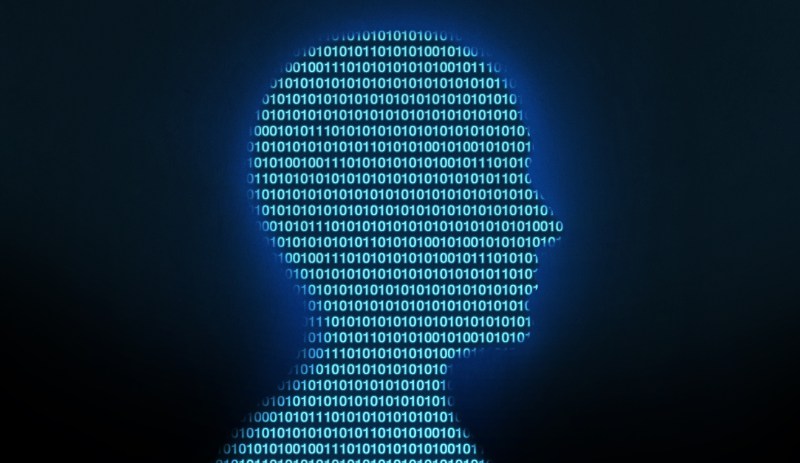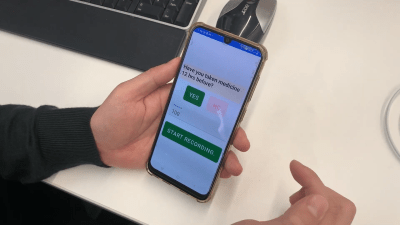

App Detects Parkinsons Disease And COVID-19 Via Audio
source link: https://hackaday.com/2022/11/28/app-detects-parkinsons-disease-and-covid-19-via-audio/
Go to the source link to view the article. You can view the picture content, updated content and better typesetting reading experience. If the link is broken, please click the button below to view the snapshot at that time.
App Detects Parkinsons Disease And COVID-19 Via Audio

One of the challenges of diagnosing diseases is identifying them early. At this stage, signs may be vague or confusing, or difficult to identify. Early diagnosis is often tied to the best possible treatment outcomes, so there’s plenty of incentives to improve methods in this way.
A new voice-based method of diagnosing disease could prove fruitful in this regard. It relies on machine learning techniques to detect when patients may be suffering from certain conditions.
Let Me Hear You Say /a/
Speech patterns and the patient’s general quality of voice have long been an important diagnostic tool for physicians. They are particularly relevant to neurological conditions. If the brain or nervous system is not functioning properly, speech can be affected.

A simple smartphone app is used to capture audio samples from the patient. The system can deal with background noise levels in a typical doctor’s office, and prompts the patient on the correct sounds to make for diagnosis. Credit: Youtube – IEEE Spectrum
Researchers at the Royal Melbourne Institute of Technology (RMIT) developed a method to detect subtle signs of disease using a patient’s voice. The idea was to use machine learning algorithms to determine whether a patient’s pronunciation of certain sounds was indicative of illness. The primary goal was to identify the presence of Parkinson’s disease via sampling a patient speaking several normal English sounds. The research had to achieve this goal despite the natural variations in voices from person to person. 36 patients with Parkinson’s disease were recruited for the research, along with 36 healthy volunteers.
As per the published study, research participants were asked to pronounce three phonemes – /a/, /o/, and /m/. That’s the sound in the middle of “car,” the “oh” sound, and the “mmmm” sound, respectively. These phonemes require the use of the throat, mouth, and nasal passages to make the noise. A machine learning algorithm was trained to determine differences in these sounds between Parkinson’s patients and healthy volunteers. Intended for use in a typical clinical setting, the algorithm was designed to work with audio samples captured from patients using a regular smartphone with reasonable levels of background noise. An app was used to collect the data, and was set up to guide patients to creating the right sounds with vocal samples of the right phonemes.

Voice samples are analysed for features that could be indicative of disease. An illness can affect parameters like vocal strength or pitch stability, or introduce a wavering quality to a phoneme. Credit: YouTube – IEEE Spectrum
In testing, it was able to identify patients with Parkinson’s disease 100% of the time. Analysis of a combination of features from all three phonemes was found to be the most reliable method for detection. Testing was limited to patients from one geographical area, and using only one model of smartphone, among other limitations. However, it indicates that there may be potential to develop a diagnostic method for Parkinson’s disease using readily-available smartphone hardware to capture audio samples and process them with an app.
The same techniques were later applied to diagnose COVID-19 patients in a study in Indonesia. In this case, the phonemes used for analysis were expanded to include /e/, /i/, and /u/ sounds in addition to /a/, /o/, and /m/. The study took place over 22 days, and involved 40 patients hospitalized with COVID-19. 48 healthy subjects made up the control group. In this case, analysis of sound features of the /i/ sound were determined to be most indicative, when captured within three days of hospital admission. The method had a 94% accuracy. This is all the more impressive for the low-tech methods used. Sound samples were captured at a sample rate of just 8 kHz, to represent the capabilities of low-tech 2G and 3G phones.
The work suggests that a variety of diseases could potentially be diagnosed thanks to telltale changes in a patient’s speech. Of course, more rigorous studies would be required before such methods become mainstream. Additionally, while such methods may be indicative of disease, vocal techniques are unlikely to become a solitary gold-standard diagnosis for most diseases. More direct and less subjective chemical diagnoses are preferable rather than relying on the intuition of more black-box machine learning systems. However, for difficult-to-diagnose diseases, having a system to offer some indicative guidance can be crucial. Expect these techniques to become more refined and a major part of modern medicine going forward.
Recommend
About Joyk
Aggregate valuable and interesting links.
Joyk means Joy of geeK